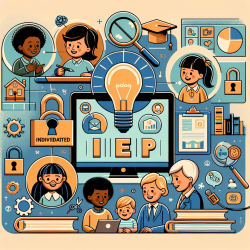Understanding Medical Service Use in Children with Conduct Problems
Recent research has provided valuable insights into the trajectories of medical service use among children with early-onset conduct problems (CP). The study, conducted by Temcheff et al., highlights the persistent nature of increased medical service utilization in children with CP, which begins as early as age nine and continues into adolescence. This blog post aims to translate these findings into actionable insights for practitioners working with children, particularly those involved in speech-language pathology and related fields.
Key Findings from the Study
The study utilized longitudinal data to assess medical service use from ages 9 to 16, focusing on psychiatric visits, injury-related visits, preventative visits, and total medical visits. Here are some critical findings:
- Children with early-onset CP were found to have higher medical service use, particularly for psychiatric reasons and injuries, compared to their peers without CP.
- This increased utilization was consistent over time, indicating a chronic pattern of higher medical service use.
- Girls initially had fewer psychiatric visits than boys, but this difference decreased over time.
- Preventative care visits were generally low among all children, but boys with CP showed a slight increase over time.
Implications for Practitioners
These findings underscore the importance of early identification and intervention for children with CP. Practitioners can play a crucial role in addressing these issues by:
- Enhancing Screening and Monitoring: Regular screening for conduct problems and associated medical needs can help identify children at risk early. Monitoring these children closely can aid in providing timely interventions.
- Promoting Preventative Care: Encouraging regular preventative care visits can help mitigate some of the long-term health impacts associated with CP. Practitioners should work with families to emphasize the importance of routine check-ups.
- Fostering Interdisciplinary Collaboration: Collaboration between speech-language pathologists, psychologists, pediatricians, and other healthcare providers can ensure comprehensive care for children with CP.
Encouraging Further Research
While this study provides significant insights, it also highlights the need for further research. Understanding the specific contexts in which injuries occur and exploring the reasons behind sex differences in medical service use can inform more targeted interventions. Additionally, examining the role of socioeconomic factors and ADHD in shaping medical service trajectories could provide a more nuanced understanding of these patterns.
For practitioners, engaging with ongoing research and contributing to data collection efforts can enhance the field's understanding of CP and its impacts. By staying informed and involved, practitioners can help shape effective interventions and improve outcomes for children with CP.
To read the original research paper, please follow this link: Trajectories of medical service use among girls and boys with and without early-onset conduct problems.










